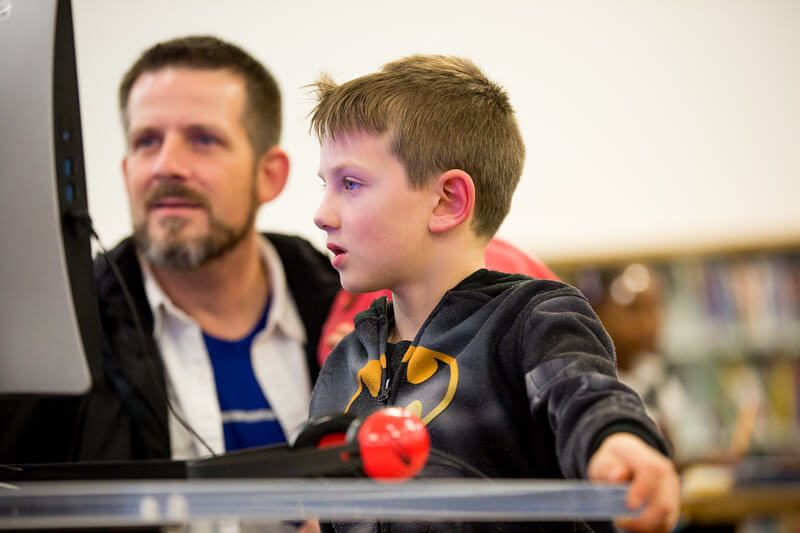I’ve written before about the challenges of being your child’s teacher during this pandemic, and today’s post is on the same topic. Because, wow, this is hard.
Parents have been sharing the frustrations that come with the online part of online learning. For those of us privileged enough to have internet access and devices that we can use to connect to school resources, it’s challenging to figure out how kids can learn through a screen.
One parent connected to the Library to find support for their child who was having a tough time with online reading assignments. Their student is typically a capable reader, but they were brought to tears whenever it came time to read from the screen.
It broke the parent’s heart—and ours at the Library too!
Here are some suggestions we shared to help this family. We hope they might be useful for you if you’re experiencing the same frustrations or if you have a new or reluctant reader at home.
- Connect with the teacher. Ask if reading something altogether different would be okay. Is there leeway with the assignments, at least until your child regains their confidence?
- Find a title that your reader enjoyed in the past and read it again. Remind them how much they loved that book to show them that reading is fun.
- Encourage your child to pick a library eBook for themselves. Research shows that when kids choose their own books they are more motivated to read, and reading scores can even improve. Sometimes it’s the pressure of reading with a purpose that complicates reading. Let the purpose be “to have fun!”
- If possible, let your child choose when they read. Did we mention that choice goes a long way?
- Or try an audiobook from OverDrive or Hoopla. Research shows that listening produces virtually the same brain activity as reading.
- Could you or another adult in your child’s life write something for your child to read? It can be fun to read a story that’s about you or someone you know, or is written by someone you know.
- Let your child select a “read-along” title from OverDrive (you can narrow the interest or reading level) or Hoopla. The online narrator can read through it first before your child reads it independently. TrueFlix and Tumblebooks (or BookFlix for younger readers) offer read–alongs, videos, activities and other features that bring books to life.
- Play the “I read a paragraph, you read a paragraph” game. Sometimes taking turns can lessen the pressure and put the focus on building great reading relationships.
- Challenge your child to see how many different voices they can use to read a section (mouse voice, soft voice, Hulk voice, deep voice). This helps them build fluency by reading the text several times until they have learned the words. It also shows your child that reading can be fun!
- Many people find that eBook or online reading is more pleasant on a tablet or smartphone. Unlike a laptop or computer these devices allow the reader to hold the item being read. If you have devices to choose from, try a mobile option.
- The size of words on a screen can be important too. You might make the words bigger, change the font, or if possible, turn the background black and the words white to help prevent eye fatigue.

